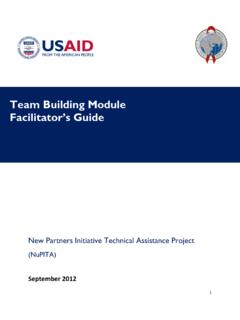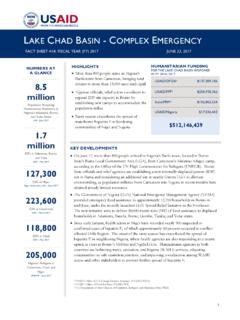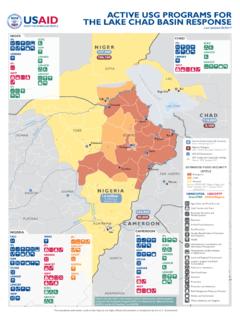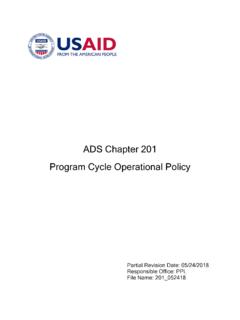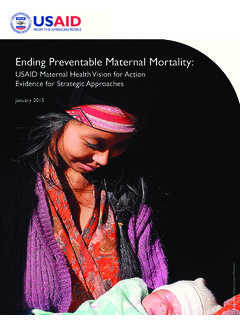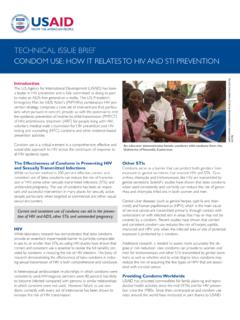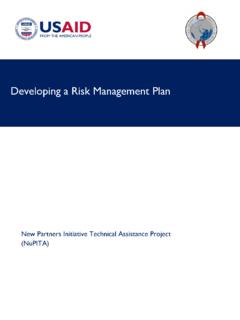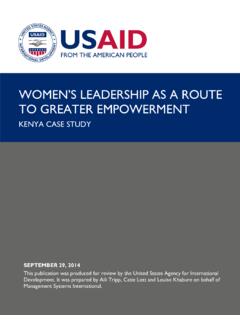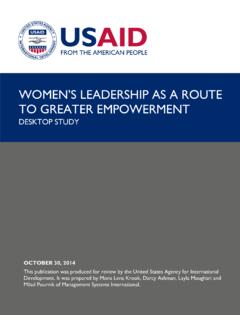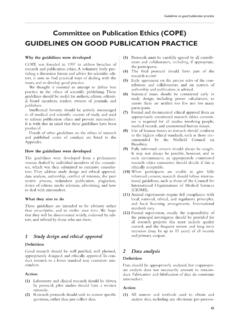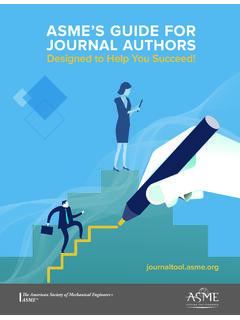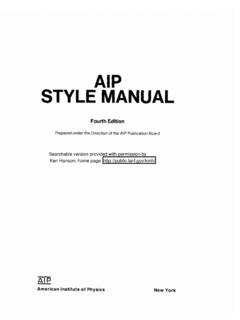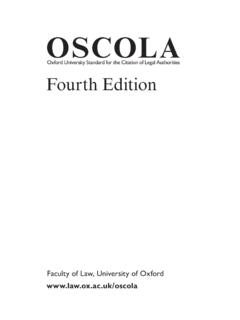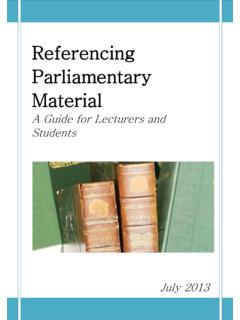Transcription of Alternative Dispute Resolution Guide
1 Alternative Dispute RESOLUTIONPRACTITIONERS GUIDECONTENTSI. Introduction: Purposes and Use of the Guide1II. Key Observations3 III. What is ADR?4IV. What Can ADR Do?7V. The Limitations of ADR21VI. What Background Conditions Are Important?24 VII. What Program Design Considerations Are Important?33 VIII. Conclusion48 Appendix A -- Taxonomy of ADR Models from the Developed and Developing WorldAppendix B -- Case StudiesAppendix C -- Research MethodologyAppendix D -- Working Bibliography of LiteratureAppendix E -- Dispute Resolution Institutional Problems; DR/ADR Solutions and Conditions for SuccessACKNOWLEDGEMENTSA bout CMGC onflict Management Group (CMG) is dedicated to improving the methods of negotiation, conflictresolution, and cooperative decision-making as applied to issues of public concern.
2 Public conflictsand ineffective means for dealing with them lead to wasted resources, social instability, reducedinvestment, chronic underdevelopment, and loss of life. CMG believes that good negotiation, jointproblem-solving, facilitation, and Dispute management skills can help those with differing interests,values, and cultures cope more effectively with their differences. CMG is an international non-profit organization. It is engaged in the training of negotiators, consulting, diagnostic research,process design, conflict analysis, facilitation, consensus-building, and mediation. CMG alsofacilitates the building of institutions for the prevention and ongoing management of is non-partisan and takes no stand on the substantive issues of a the AuthorsScott BrownSince 1996, Scott Brown has been the Dean of the William Jewett Tucker Foundation, the firstendowed deanship at Dartmouth College.
3 Prior to his appointment as dean, he was the Presidentand Executive Director of Conflict Management Group from 1992 1996. From 1986 1992, was the Associate Director of the Harvard Negotiation Project at Harvard Law Brown is co-author of Getting Together, Building Relationships While You Negotiate, andhas published more than a dozen articles or book chapters on negotiation and conflict was educated at Dartmouth College and Harvard Law CervenakChristine Cervenak is trained as a lawyer and is a mediator with the Harvard Negotiation Cervenak has professional negotiation experience in international law and policy, havingworked as an Attorney-Advisor with the State Department s Office of the Legal Advisor (1987 1990) and as the Legal Officer for the UN s (UNRWA s) operations in the West Bank (1990 1992).
4 Ms. Cervenak has published on human rights, refugee law, and international peaceoperations. She was the Human Rights visiting fellow at Harvard Law School from 1992 1993,and was educated at the University of Notre Dame, UCLA School of Law, and the GraduateInstitute of International Studies in Geneva, FairmanDavid Fairman is a Senior Associate at the Consensus Building Institute, a Cambridge-basednon-profit organization. He specializes in the development of negotiation and consensusbuilding training courses for public and non-profit organizations. In collaboration with theNetherlands-based Sustainability Challenge Foundation, Mr. Fairman trains developing countrypolicy-makers to integrate and balance environmental, economic, and social goals indevelopment projects and policies.
5 Mr. Fairman is currently completing his in politicalscience at MIT and received his from Harvard in : Purposes and Use of the Guide1 Part IIntroduction: Purposes and Use of theGuideDuring the past decade, USAID hassupported programs throughout the world tofacilitate the development of legal systems andpromote civil society. They seek to stabilizedeveloping societies and facilitate economicdevelopment by strengthening civil structures,improving access to justice, and reformingjudicial 's work in promoting the rule oflaw in developing and transitional societies overthe last decade has led to an interest in the use ofalternative Dispute Resolution , or "ADR.
6 "Several reasons underlie this interest. ADR istouted as more efficient and effective than thecourts in providing justice, especially incountries in which the judiciary has lost the trustand respect of the citizens. Moreover, ADR isseen as a means to increase access to justice forpopulations that cannot or will not use the courtsystem, to address conflicts in culturallyappropriate ways, and to maintain social the spread of ADR programs in thedeveloped and developing world, creative usesfor and designs of ADR systems areproliferating. Successful programs areimproving the lives of individuals and meetingbroad societal goals. There is a critical mass ofADR experience, revealing important lessons asto whether, when, and how to implement on this experience, this Guideis intended to provide an introduction to thebroad range of systems that operate under therubric of ADR.
7 It is designed to explore andclarify the potential uses and benefits of ADRand the conditions under which ADR programscan succeed. It is written to help projectdesigners decide whether and when toimplement ADR programs in the context of ruleof law assistance or other developmentinitiatives. The Guide is also explicit about thelimitations of ADR programs, especially wherethey may be ineffective or evencounterproductive in serving some the caveat that data systematicallyevaluating ADR programs both in the UnitedStates and abroad is hard to find, we believevalid conclusions can be drawn from theevidence we have been able to collect andreview, as well as from CMG's and our advisoryteam's experience designing and managing ADRprograms around the It is important tonote that the primary focus of the Guide (andtherefore of the research) is on the uses of ADRrelated to the rule of law.
8 Other applications ofADR are discussed but not as thoroughlyexplored. 1 CMG's Advisory Group of ADR and conflictmanagement experts includes Professors Frank Sanderand David Smith of Harvard Law School; RobertRicigliano, CMG Executive Director; Diana Chigas,CMG Regional Director; and Antonia Handler Chayes,CMG Senior Advisor. The Group was called upon toprovide advice at key points in the project. Their role,as well as the composition and role of others on theCMG project team, are described in Appendix Introduction: Purposes and Use of Guide This Guide reflects a broad review ofEnglish and Spanish language ADR literaturepertaining to developing world documents are summarized in theWorking Bibliography, Appendix D.
9 The Guidealso incorporates key observations in the courseof field assessments in Bangladesh, Bolivia,South Africa, Sri Lanka, and Ukraine, which aremore fully described in the case studies, atAppendix B. A more detailed description ofour research methodology is contained inAppendix C. A Taxonomy of ADR at AppendixA provides definitions of key terms and aframework for understanding the basic andhybrid ADR systems that have emerged. Thematrix found in Appendix E highlights centralissues relevant to Dispute Resolution andpotential solutions.* * *Key Observations3 Part IIKey ObservationsHighlighted below are a number of the keyobservations that are explored in greater depth inthis ADR programs cannot be a substitute for aformal judicial system.
10 ADR programs areinstruments for the application of equity, ratherthan the rule of law, and as such cannot beexpected to establish legal precedent orimplement changes in legal and social , ADR programs can complement andsupport judicial ADR programs can increase access to justicefor social groups that are not adequately or fairlyserved by the judicial system they can alsoreduce cost and time to resolve disputes andincrease disputants' satisfaction with When courts are systematically biasedagainst women, ADR may be able to improvewomen's access to justice, especially whendiscrimination against women inherent in localnorms or traditional Dispute resolutionmechanisms can be overcome in the new ADR programs can support not only rule oflaw objectives, but also other developmentobjectives, such as economic development,development of a civil society, and support fordisadvantaged groups, by facilitating theresolution of disputes that are impeding progresstoward these Before developing an ADR program, it iscritical to determine whether ADR is appropriatefor meeting development objectives, or whetherestablishment of rights, strengthening of the ruleof law.
